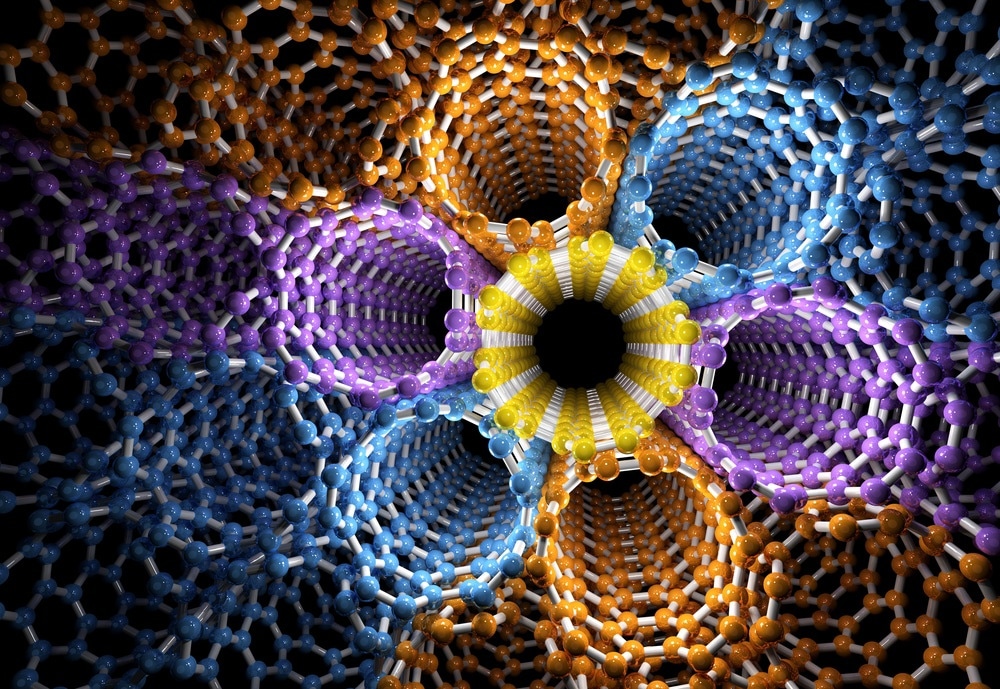Prof. Mathias Goeken and his team work with metals and their mechanical properties, developing new materials for high temperature applications such as high temperature coatings
Please could you introduce our readers to your work in nanomechanial testing?
Here at Friedrich-Alexander University we work primarily on metals and their mechanical properties.
We also develop new materials for high-temperature applications for use in the automotive industry, lightweight materials for use in constructions, films, coatings, and many different materials. No matter what the application is, we are always looking to improve the mechanical properties of different materials.

© Forance/shutterstock.com
By mechanical improvement, I mean trying to increase the material’s strength and ductility, and developing an understanding of deformation behaviour and processes that happen on a microstructural level. We do this by correlating micro structural analysis with macroscopic, bulk mechanical properties. By developing an understanding of what is happening on a microscopic level when a material is deformed, we can develop improvements which impact the materials bulk behaviour.
How do you use micro- and nanoscale testing to develop materials with improved bulk properties?
Micro-scale testing has evolved enormously over the last 20 years. I started working with Hysitron Instruments in 1995 when nanoindentation was a relatively new technique. At the time I was working at the University in Saarbrucken and we had one of the first nanoindenters in Europe.
We started using nanoindentation techniques to observe the local strength of materials, to gain a stronger understanding of material behaviour. Nanomechanical testing as grown significantly since then and the equipment and processes used have become increasingly sophisticated and complex. We can now explore far more than just the localised strength of materials and can now measure more complex properties such as hardness and the Young’s modulus of a localised point on a material.
We want to understand the strain and sensitivity of materials on a nanoscale. We want to measure properties at higher temperatures, in different environments, and to investigate fracture toughness, fatigue, creep, and all these different mechanical properties that are necessary for many applications.
What different types of tests do you use to test materials?
Nanoindentation is a basic test, which we still use in most of our projects, but we also employ many other techniques on the nanoscale. We intensively use micro-cantilever testing, which allows you to deform a microscopic cantilever in a microscope, and measure the fracture toughness of these materials.
We also often perform micropillar testing, which involves microscopically crushing pillars and then testing them in the microscope. Bulge testing is another special technique which we carry out to test very thin films.
We can also test the mechanical properties of individual particles which are the size of one micrometer. We often test a lot of nickel-based superalloys which have different phases within their overall structure, such as gamma and gamma-prime phases with cubic structures. Nanoparticle testing means we are able to etch away at the overall structure and separate the different cubes for individual testing.
Why are you interested specifically in coatings? How do you test coatings?
Coatings are absolutely necessary for all high-temperature applications such as the super-alloys used in turbine applications. The coating provides oxidation protection, for which aluminised coatings are very popular. The coatings have to withstand high thermal loads, but also mechanical loads, which requires toughness and ductility. This means nanoscale testing to make sure these properties are good enough is important, especially when dealing with coatings which have mechanical properties that are difficult to measure, or those that will be used in ccritical applications.
For tests such as these we can use a few different test methods. Micro-cantilever tests can be ran directly from the coating, and we can also use nanoidentation to measure coating properties in a cross-section. The AFM, integrated with Bruker's Hysitron, allows us to scan the tip or surface of the sample and select locations for testing.
Nanomechanical Testing of High-Temperature Coatings
Nanomechanical Testing of High-Temperature Coatings from AZoNetwork on Vimeo.
Why do you choose to use Bruker's Hysitron equipment for your research?
The Hysitron instrument was the first to combine AFM and nanoindentation, and it has remained the best instrument for the nanomechanical testing of materials.
Bruker offers very important tools, such as picoindenter systems, which can be used in situ and integrated imaging modes such as transmission electron microscopy and scanning electron microscopy which are very useful for in-situ testing.
What impact do you expect your work on high-temperature coatings to have on the real world?
The types of high-temperature coatings that we work on are mostly used by the aerospace industry, where they protect the components in engine turbines. However, they are also required for use in other turbines, such as those found in industrial plants and in power stations.
By improving the performance of the coatings used in these systems we will be able to improve the performance of the turbines themselves, making them more powerful and more efficient.
Have you enjoyed hosting this year’s Nanobrücken conference?
It's a very nice conference and we’ve had some great exchanges with people from all around the world. The conference allows us to see new developments in nanoindentation instruments and the application of different techniques. It attracts a good mix of people from industry and science, and mixes young researchers with the more experienced people.
This conference helps spread knowledge about nanomechanical techniques and shows younger people where and how these techniques can be used.
We were honoured to host the conference this year after having used instruments by Hysitron for many years. Erlangen, the home of the Friedrich-Alexander University, is well known for its nanomechanics research and it was a pleasure to host the event here for the first time.
Disclaimer: The views expressed here are those of the interviewee and do not necessarily represent the views of AZoM.com Limited (T/A) AZoNetwork, the owner and operator of this website. This disclaimer forms part of the Terms and Conditions of use of this website.